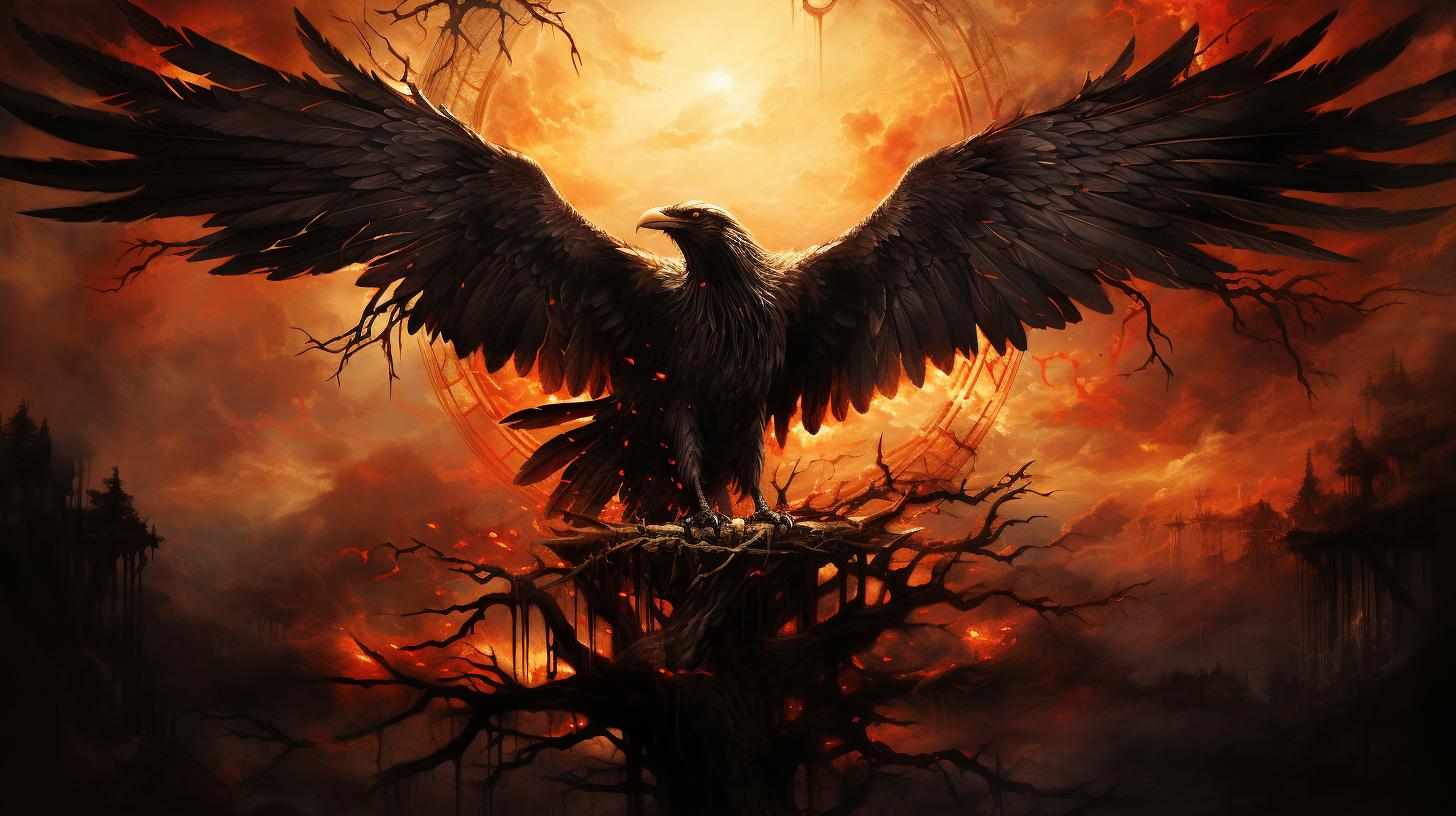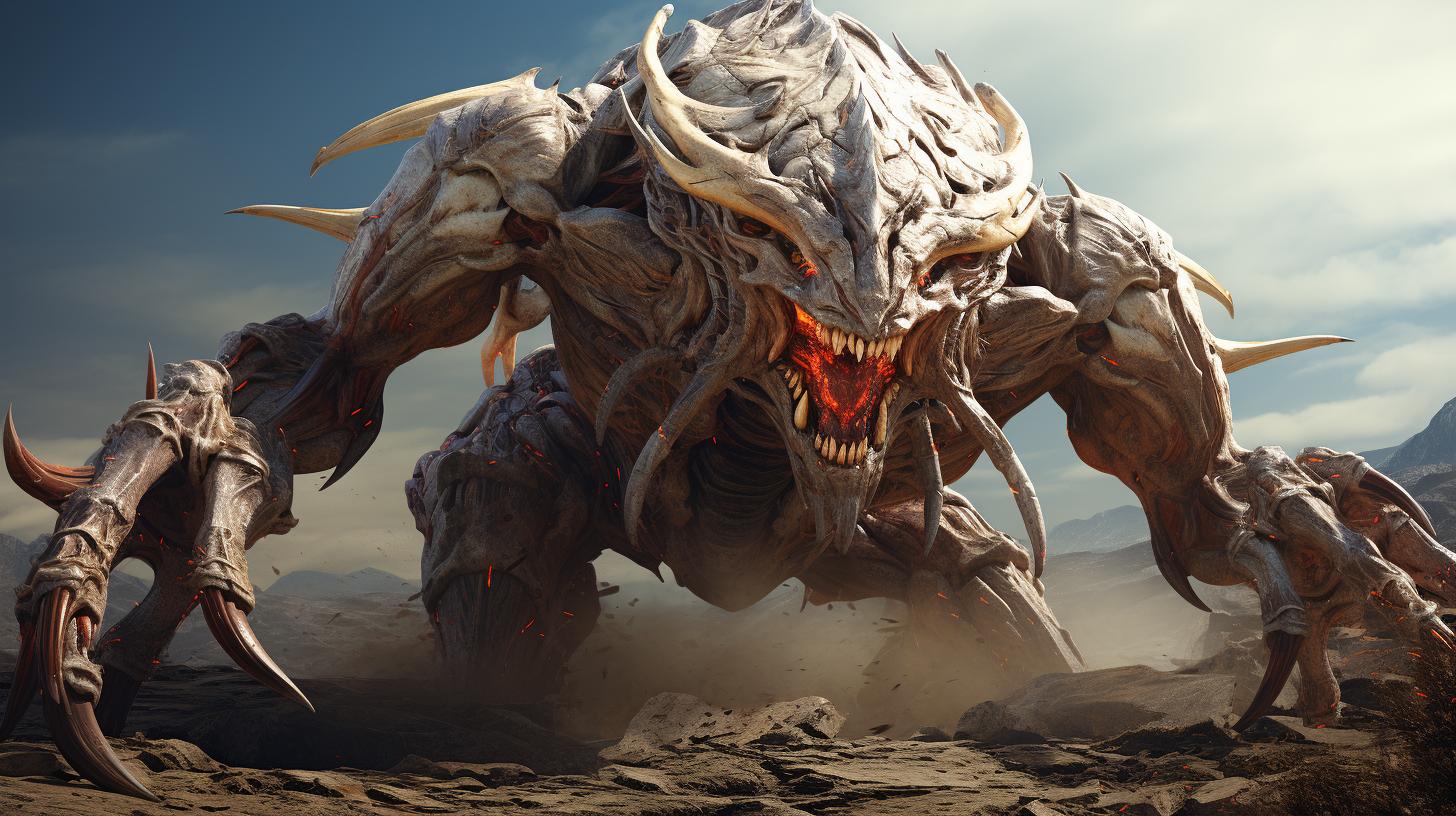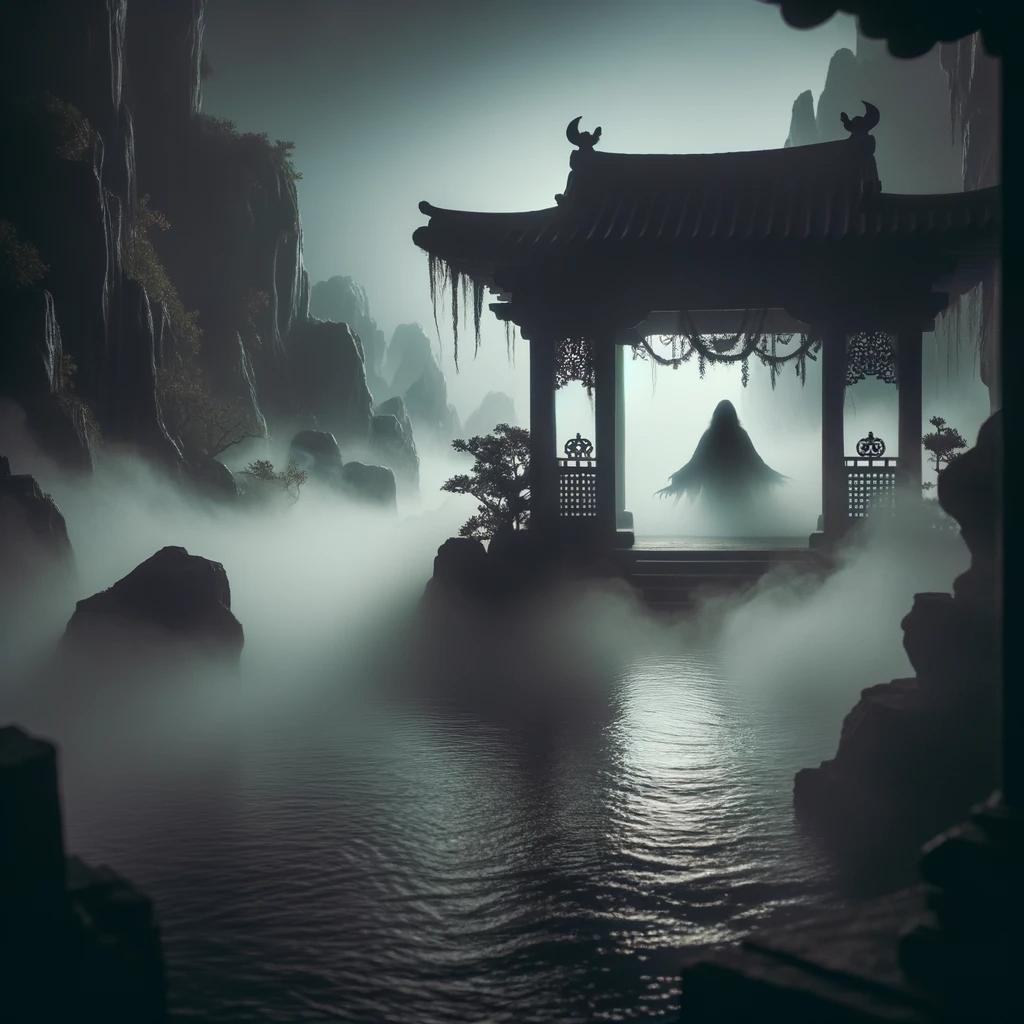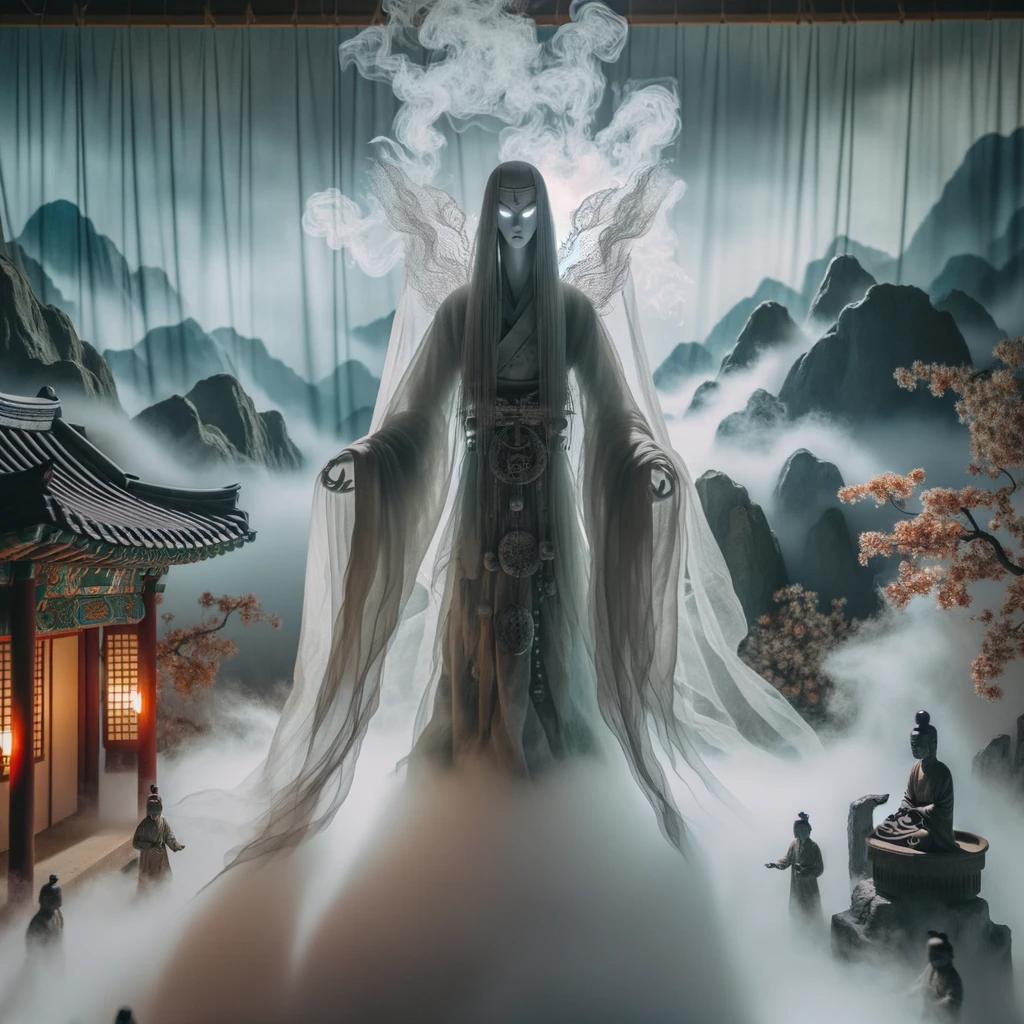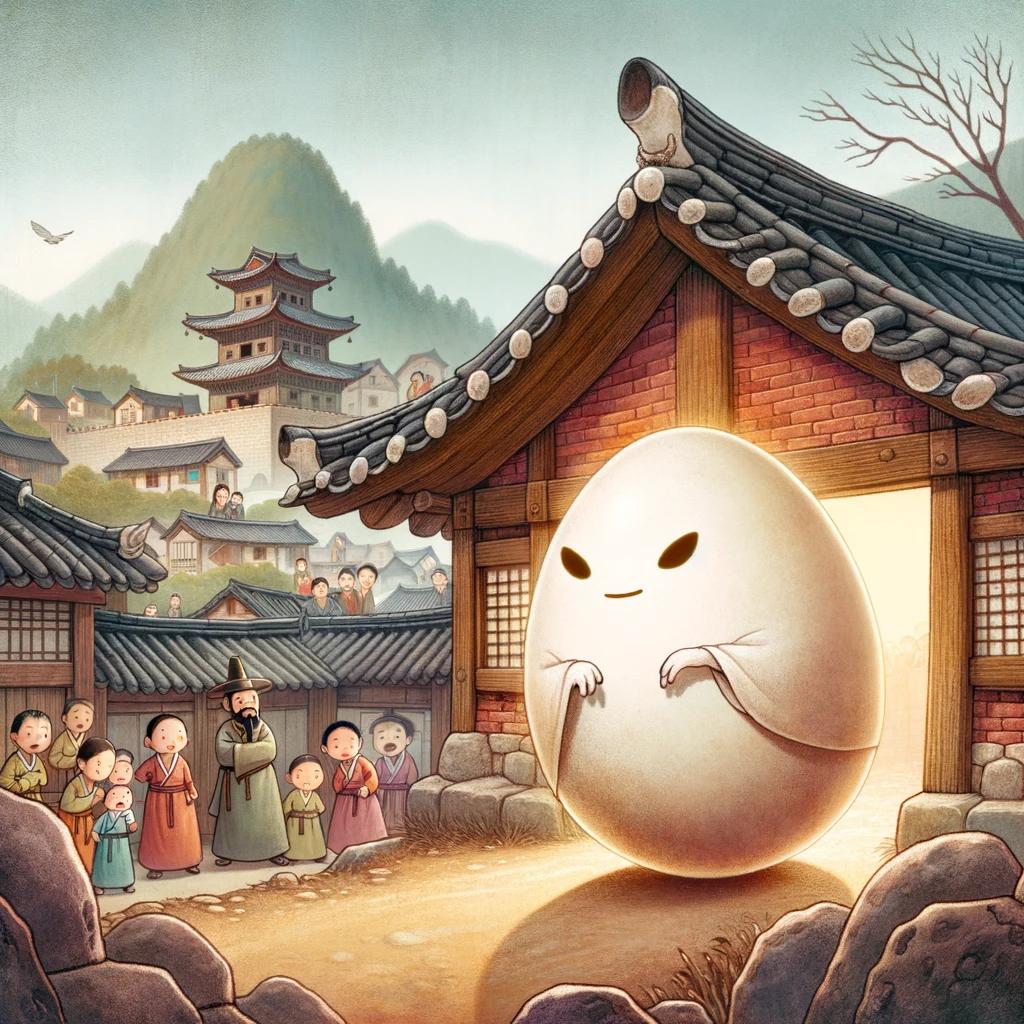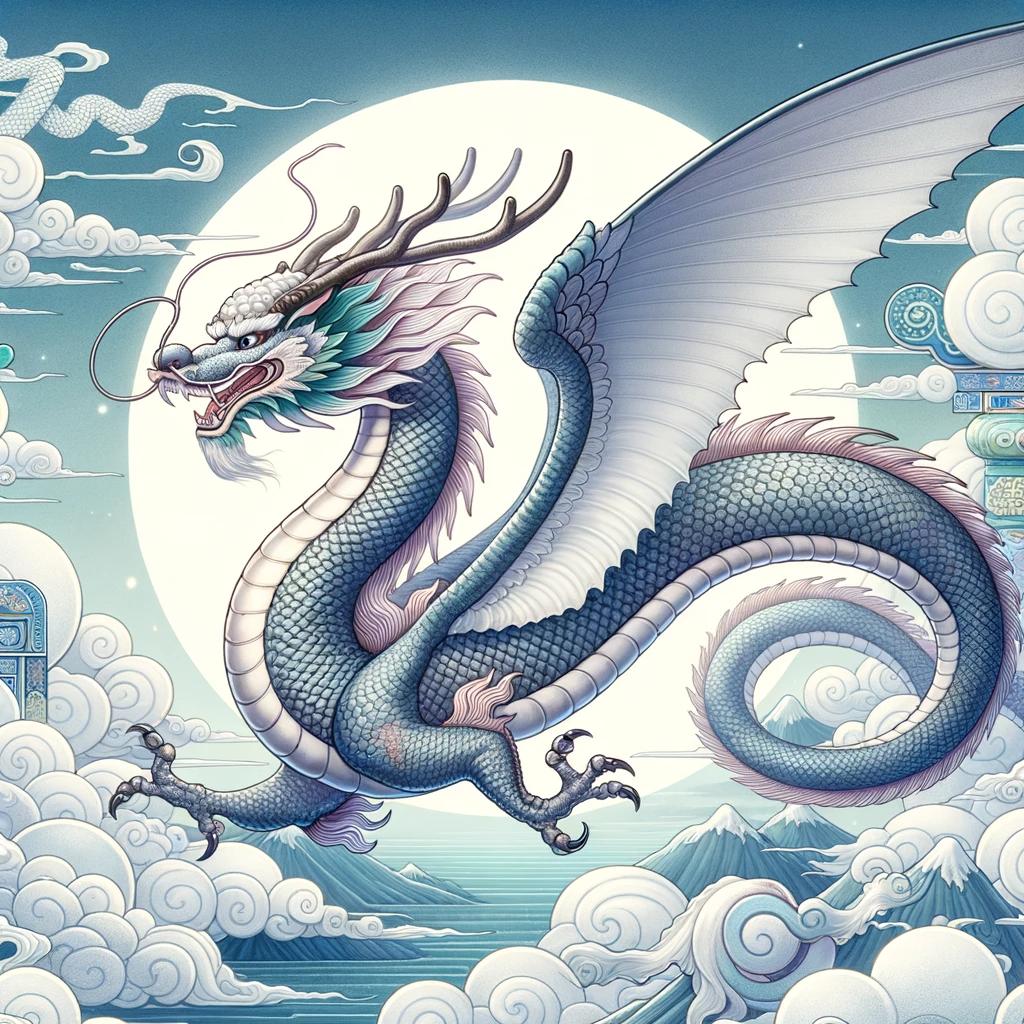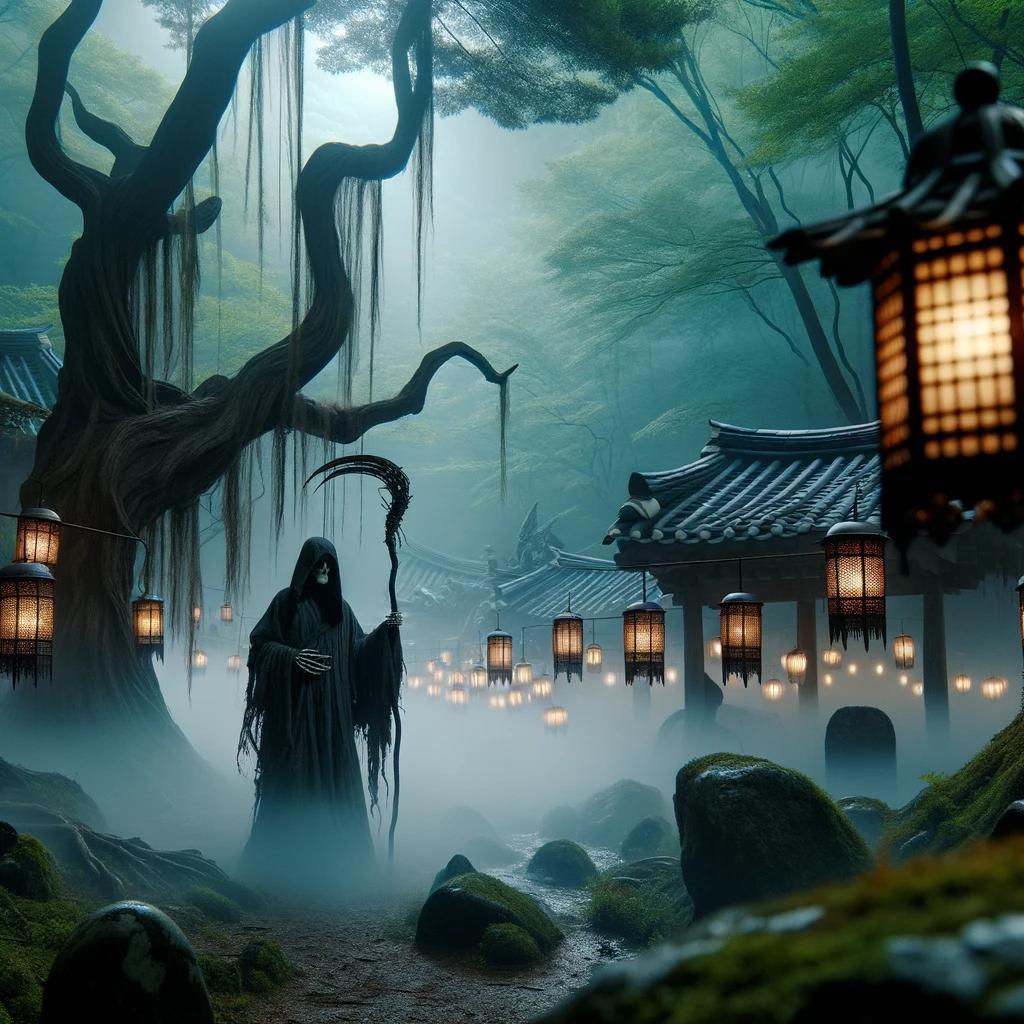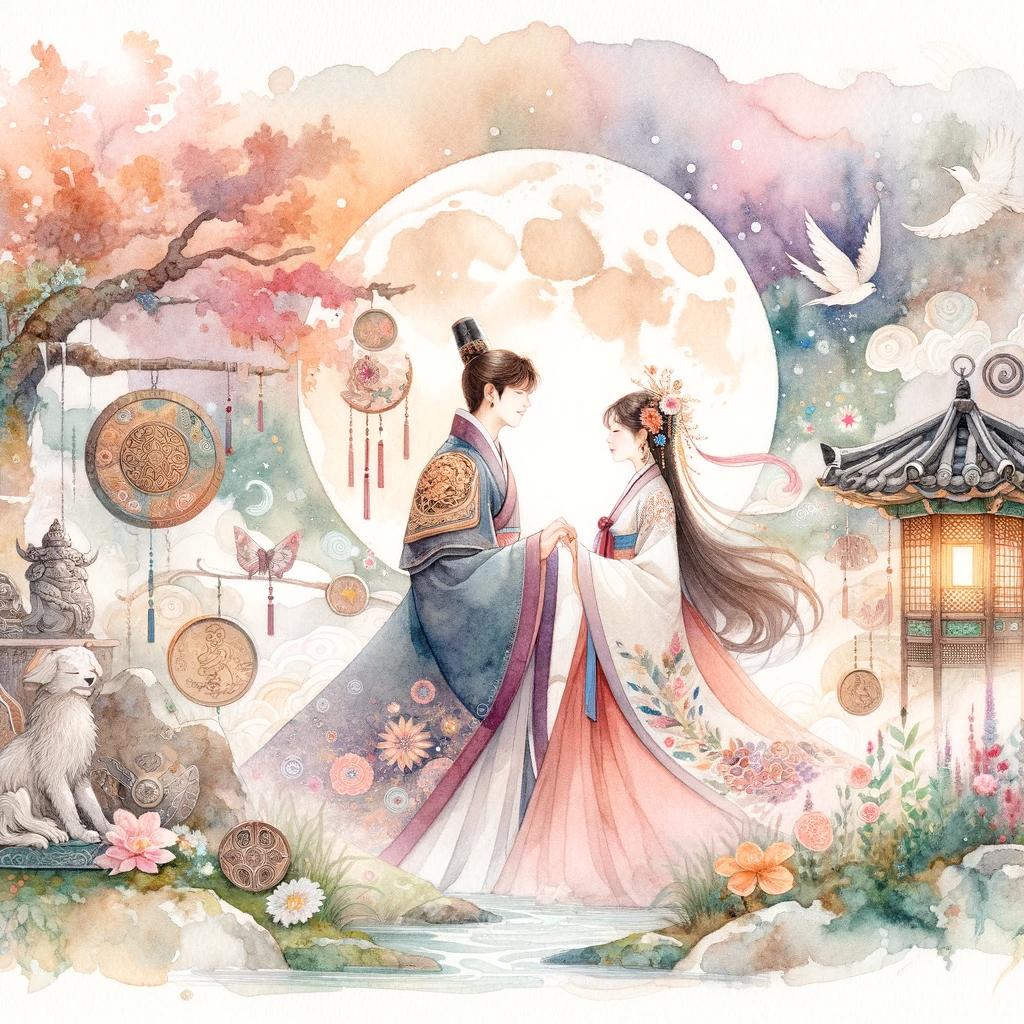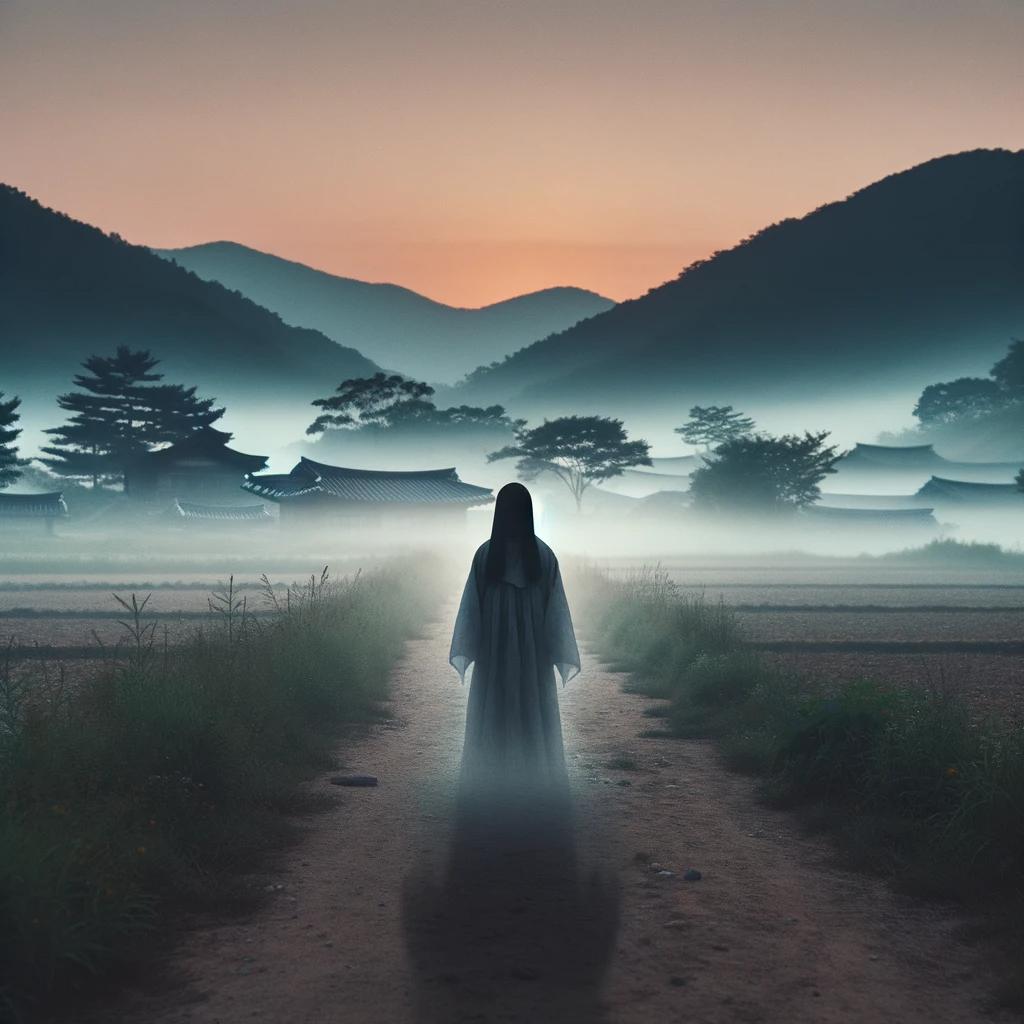‘Samjok or the Korean God: Unraveling the Mythical Power and Symbolism’
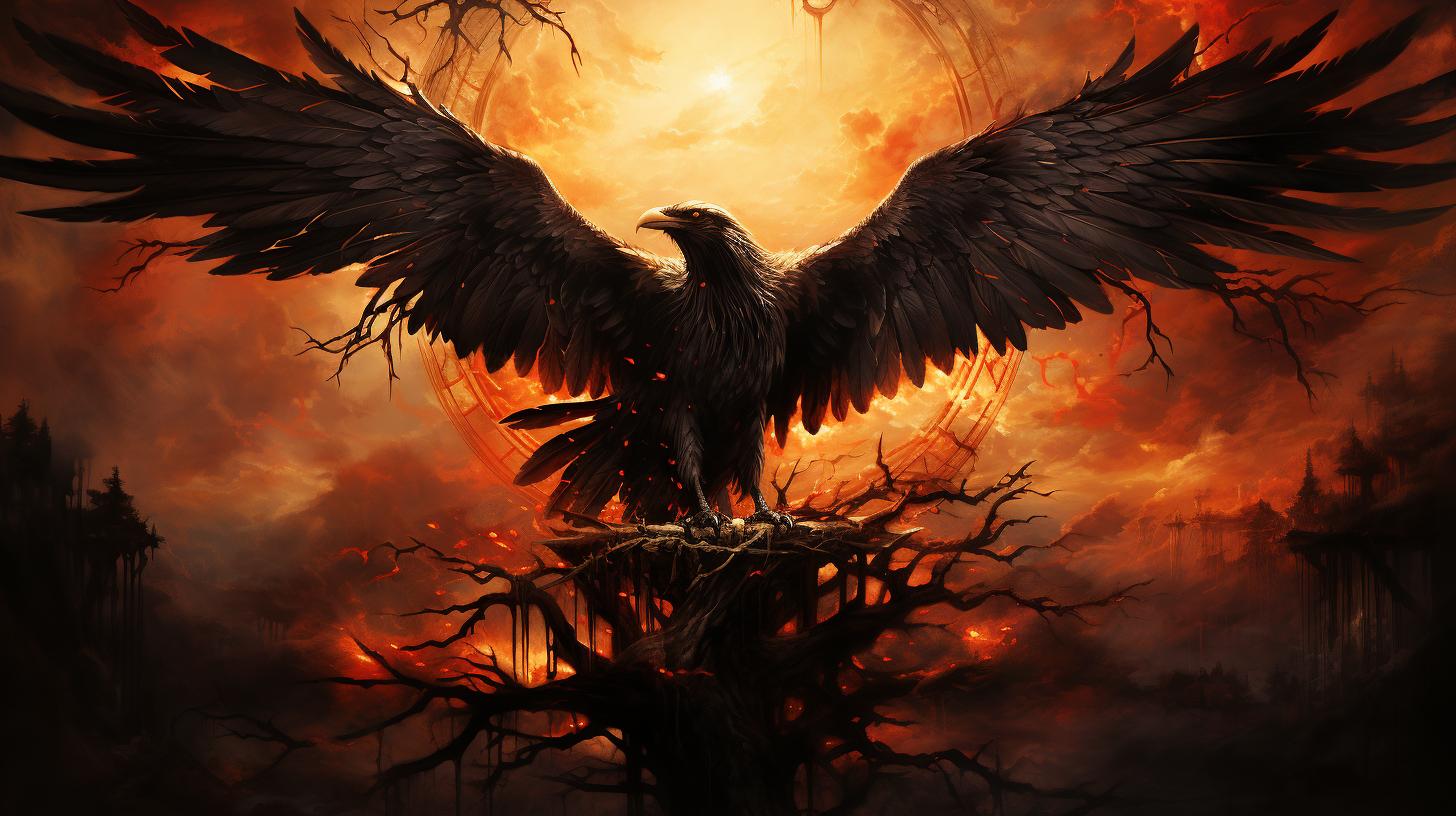
The Samjok, also known as the Korean God, holds significant cultural value in Korea. This mythical three-legged crow symbolizes power and acts as a messenger between gods and humans.
It is considered superior to the dragon and the bonghwang in Korean mythology. The Samjok’s presence extends into contemporary Korean culture, appearing in dramas, series, and corporate logos. Exploring its origins, symbolism, and depictions deepens our understanding of Korean beliefs and values, while also highlighting its connections to other East Asian cultures.
Additionally, its historical and modern interpretations contribute to its enduring legacy today.
The Mythical Three-Legged Crow in Korean Culture
The mythical three-legged crow, known as the Samjok-o, holds a significant place in Korean culture. This enigmatic creature has a rich history and fascinating origins that trace back to ancient times.
History and Origins of the Samjok-o
The origins of the Samjok-o can be found in Korean mythology, where it symbolizes power and acts as a messenger between gods and humans. The earliest depiction of a three-legged crow can be seen in the neolithic ceramics of China’s Yangshao culture.
In Korean mythology, the Samjok-o is believed to have guided Emperor Jimmu on his journey to Yamato, Japan.
Symbolism and Significance of the Three-Legged Crow
The Samjok-o represents the sun, and its three legs symbolize balance and harmony. Considered superior to the dragon and the bonghwang in Korean folklore, it embodies power, wisdom, and auspiciousness. Throughout history, the Samjok-o has been revered as a symbol of divine connection and protection.
Cultural Depictions and Representations of the Samjok-o in Korea
The Samjok-o continues to captivate Koreans, making appearances in various art forms and cultural expressions. It frequently appears in dramas, series, and films, showcasing its enduring presence in contemporary Korean entertainment.
Additionally, many companies in Korea incorporate the Samjok-o into their corporate logos, recognizing its cultural significance and evocative symbolism.
- The Samjok-o has a deep history and is rooted in Korean mythology.
- It represents power, wisdom, and balance, with three legs symbolizing harmony.
- The Samjok-o remains prevalent in contemporary Korean culture, appearing in entertainment and corporate branding.
Key points:
Comparison to Other Mythical Creatures in Korean Folklore
In Korean folklore, the Samjok-o, or the three-legged crow, holds a prominent place alongside other mythical creatures.
These fascinating beings contribute to the rich tapestry of Korean culture, each with their unique roles and symbolism. Let’s explore some of these creatures and their significance:
The Dragon and the Bonghwang in Korean Mythology
Korean mythology features two significant creatures often associated with power and nobility.
The dragon, known as Yong or Yongwang, represents strength, wisdom, and prosperity. It is considered the symbol of the emperor and holds a prominent place in Korean historical narratives. On the other hand, the bonghwang, a mythical bird with colorful feathers, is a symbol of good fortune and harmony.
Other Legendary Creatures and Their Roles in Korean Culture
Besides the Samjok-o, Korean folklore is replete with various mythical creatures that captivate the imagination. One such creature is the haechi, a mythical creature resembling a lion and a dog. It is revered as a guardian and protector against evil spirits.
Another notable creature is the bulgasari, a powerful monster believed to consume iron and defeat nightmares. These creatures, among many others, showcase the diverse range of folklore in Korean culture.
The Samjok-o as a Messenger Between Gods and Humans
Out of these legendary creatures, the Samjok-o stands out as a unique entity, serving as a bridge between gods and humans.
According to Korean mythology, it acts as a messenger, carrying important messages and providing guidance to both realms. Its three legs symbolize its connection to the heavens, making it a revered figure that embodies power and spiritual significance.
Through the comparison of these mythical creatures in Korean folklore, we gain a deeper understanding of the diverse beliefs, values, and cultural tapestry of Korea. These creatures continue to capture the imagination and play a significant role in shaping Korean identity and storytelling traditions even in the modern era.
Incorporation of Samjok-o in Contemporary Korean Culture
The Samjok-o, a symbol of power and revered in Korean mythology, continues to play a significant role in contemporary Korean culture. It finds its presence in various aspects of modern society, including art, media, entertainment, corporate branding, and even potential consideration as a national emblem.
Samjok-o in Modern Art, Media, and Entertainment
In the realm of modern art, the Samjok-o holds a captivating allure for artists seeking to explore its mythical attributes. Its iconic representation often appears in paintings, sculptures, and other visual art forms, allowing contemporary audiences to engage with this cultural symbol on a deeper level.
Additionally, the Samjok-o frequently appears in popular media and entertainment, with TV dramas and films incorporating its legendary character into their storylines, captivating audiences with tales of power and mystique.
Corporate Logos and Symbols That feature Samjok-o
The Samjok-o’s symbolism of power and spiritual connection has not gone unnoticed by various Korean companies.
Its imagery can be found in the logos and symbols of several corporations, representing their aspirations for strength, resilience, and success. By incorporating the Samjok-o into their branding, these companies seek to tap into its mythical energy and to resonate with Korean cultural identity.
Consideration for Samjok-o as a National Emblem
The Samjok-o’s enduring presence and cultural significance have led to discussions regarding its potential adoption as a national emblem in Korea. With its representation of power, symbolism, and historical importance, there is a growing interest in recognizing the Samjok-o as an official symbol of the country.
Through its adoption, Korea can further embrace its rich mythological heritage and connect its past with its present identity.
Samjok-o and its Role in Korean History and Beliefs
The Samjok-o holds a significant place in Korean history and beliefs, playing various roles during different periods. From its influence during the Joseon Dynasty to its connection with spiritual beliefs and practices, the Samjok-o embodies deeply rooted cultural significance.
Samjok-o’s Influence during the Joseon Dynasty
During the Joseon Dynasty, the Samjok-o was highly revered as a symbol of power and authority. It was associated with the King, representing his divine mandate to rule. The presence of the Samjok-o in royal palaces and official seals emphasized the ruling class’s legitimacy and their connection to the heavens.
Samjok-o’s Connection to Spiritual Beliefs and Practices
Beyond its role in politics, the Samjok-o is deeply intertwined with spiritual beliefs in Korea. It is considered a divine messenger between gods and humans, bridging the realms of the spiritual and the material.
The Samjok-o is believed to bring blessings, protection, and good fortune to those who revere it, making it an integral part of spiritual practices, rituals, and ceremonies.
Historical Figures and Events Linked to the Samjok-o
Throughout history, several notable figures and events have been connected to the Samjok-o.
Mythical stories depict the Samjok-o guiding Emperor Jimmu in his journey to Yamato in Japan, showcasing its role as a guiding force in historical narratives. Additionally, depictions of the Samjok-o can be found in various historical records, artworks, and artifacts, serving as a testament to its enduring presence in Korean culture.
Exploring the Mythological Connection Between Samjok-o and East Asian Cultures
Diving deeper into the mythological realm, the Samjok-o not only holds significance in Korean culture but also shares connections with other East Asian cultures. Let’s explore the interplay of the Samjok-o in Chinese mythology, variations within it, the presence of similar mythical creatures in Japanese folklore, and the cross-cultural influences and shared symbolism in the broader East Asian context.
Samjok-o in Chinese Mythology and its Variations
In Chinese mythology, the mythical three-legged crow takes on different names such as Yangwu or Jinwu. Unlike its Korean counterpart, the Samjok-o in Chinese legends is depicted as a red crow rather than black.
Interestingly, the presence of a three-legged crow can be traced even further back to the Neolithic Yangshao culture in China, with ancient pottery providing evidence of its existence.
Similar Mythical Creatures in Japanese Folklore
Japanese folklore also features creatures similar to the Samjok-o.
The Yatagarasu, often depicted as a three-legged crow, plays a prominent role in Shinto mythology and is considered a divine messenger. This creature shares similarities and connections with the Samjok-o in terms of symbolism and its association with the sun.
Cross-cultural Influences and Shared Symbolism in East Asia
These mythological connections between the Samjok-o, its Chinese counterpart, and the Yatagarasu highlight the cross-cultural influences and shared symbolism within East Asian cultures. The celestial symbolism, representation of the sun, and messenger roles of these creatures demonstrate the interconnectedness and mutual inspiration among the mythologies of China, Korea, and Japan.
- Both the Samjok-o and the Chinese three-legged crow symbolize the sun in their respective mythologies.
- The Yatagarasu in Japanese folklore shares similarities in terms of its role as a messenger.
- These mythological connections reflect the historical and cultural exchanges between East Asian countries.
Exploring the mythological connection between the Samjok-o and East Asian cultures provides valuable insights into the shared beliefs, symbolism, and interwoven stories that have shaped the region’s folklore.
These ties offer a deeper understanding of the cultural heritage and interconnectedness among East Asian countries throughout history.
Examining the Cultural Significance and Legacy of Samjok-o
The Samjok-o, a mythical three-legged crow, holds immense cultural significance and a rich legacy in Korean society. This section delves into various aspects that highlight its importance:
Samjok-o in Language, Idioms, and Popular Sayings
One notable area of cultural influence is the presence of the Samjok-o in Korean language and idiomatic expressions.
It has become a metaphor for resilience, agility, and strength. Phrases like “taking flight like the Samjok-o” are used to describe someone’s ability to overcome challenges with grace and determination.
Impact on Korean Identity and National Pride
The Samjok-o plays a significant role in shaping Korean identity and fueling national pride.
As a revered symbol of power and spiritual connection, it evokes a sense of unity and cultural pride among Koreans. Its legendary status represents the nation’s rich heritage and serves as a reminder of the strength and resilience of the Korean people.
Preservation and Promotion of Samjok-o in Contemporary Society
The preservation and promotion of the Samjok-o in contemporary Korean society signify the commitment to preserving cultural heritage. Efforts are made to educate the younger generation about its significance through various mediums, such as museums, cultural festivals, and educational initiatives.
By showcasing the Samjok-o, Korea aims to ensure its continued recognition and understanding for future generations.
Examining the cultural significance and legacy of the Samjok-o offers valuable insights into the deep-rooted beliefs and values of Korean society.
It serves as a constant reminder of the enduring mythology that has shaped Korean culture throughout history.
Modern Interpretations and Adaptations of Samjok-o
The mythical Samjok-o has continued to captivate modern audiences through its presence in various forms of artistic expression. From literature to film and music, this enigmatic creature has inspired and influenced creative minds, leaving a lasting impact on the cultural landscape.
Samjok-o in Literature, Film, and Music
In literature, the Samjok-o often serves as a powerful symbol of transformation and spiritual guidance. It appears in novels and poetry, representing a connection between the divine and mortal realms.
Writers weave intriguing narratives around this mythical creature, exploring themes of destiny, bravery, and the search for truth.
In the world of film, the Samjok-o’s mesmerizing presence has been brought to life through visual storytelling. Directors and filmmakers draw upon its mythical qualities to create compelling narratives and breathtaking visuals.
The three-legged crow becomes a focal point in fantasy and historical films, adding depth and intrigue to the storyline.
Music, too, has embraced the Samjok-o as a source of inspiration. Musicians and composers craft melodies and lyrics that evoke the essence of this ancient deity. Through traditional and contemporary musical compositions, the Samjok-o’s majestic and otherworldly nature is vividly portrayed, transporting listeners into a realm of mythical wonder.
Samjok-o’s Role in Tourism and Regional Identity
The Samjok-o holds a significant place in promoting tourism and fostering regional identity. Its legendary status attracts visitors to cultural festivals and events that showcase its rich heritage. Local communities embrace the Samjok-o as a symbol of pride, incorporating it into their traditions, dances, and cuisine.
Tourists are drawn to regions that highlight the Samjok-o’s mythical presence, offering opportunities to learn about its significance and experience the vibrant culture associated with it. Museums, exhibitions, and guided tours provide a deeper understanding of the Samjok-o’s historical and cultural importance, creating memorable travel experiences.
Contemporary Perspectives and Relevance of Samjok-o in the 21st Century
In the 21st century, the Samjok-o has retained its relevance and continues to inspire contemporary artists and thinkers. Its symbolism transcends time and speaks to universal themes of resilience, transformation, and the exploration of the unknown.
The Samjok-o serves as a reminder of the enduring connection between humanity and the mythical realm, casting its enigmatic spell in the modern world.
Furthermore, scholars and researchers delve into the deeper meanings and interpretations of the Samjok-o, uncovering its relevance in the context of modern society. Its archetypal qualities resonate with individuals seeking deeper spiritual connections and a sense of identity in an ever-changing world.
The Samjok-o’s adaptability and continued presence in various art forms reflect its enduring allure and ongoing significance.
.

